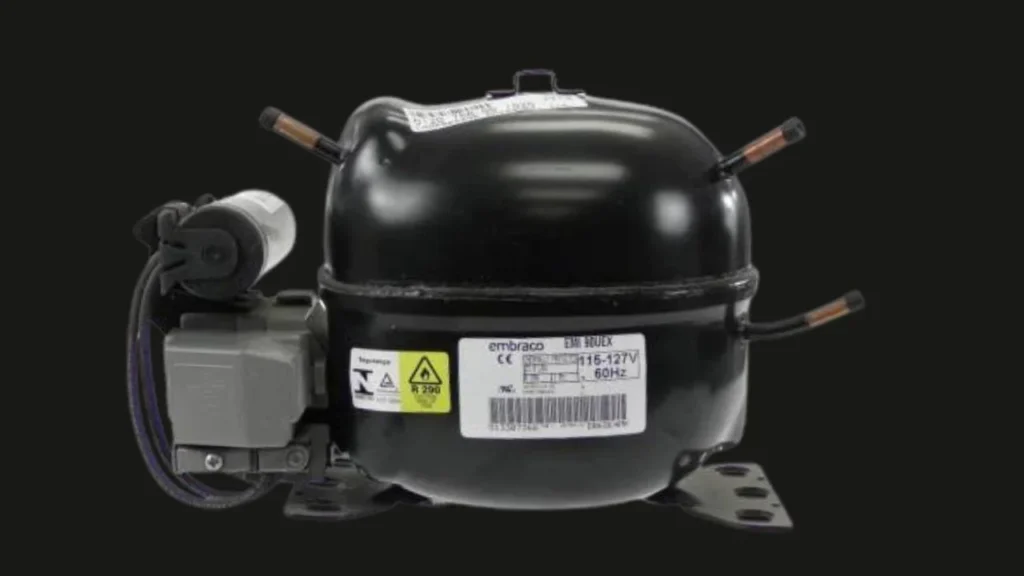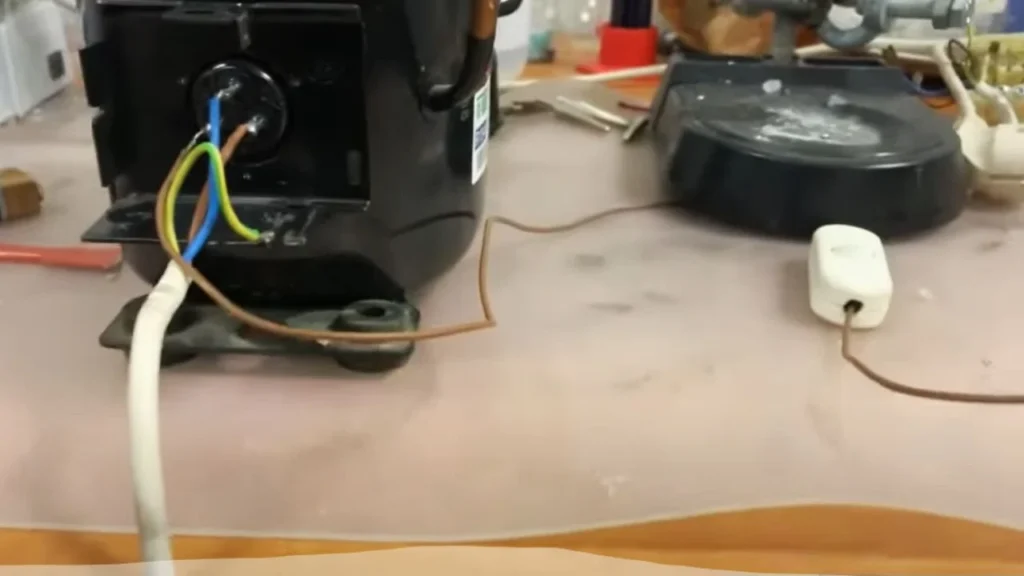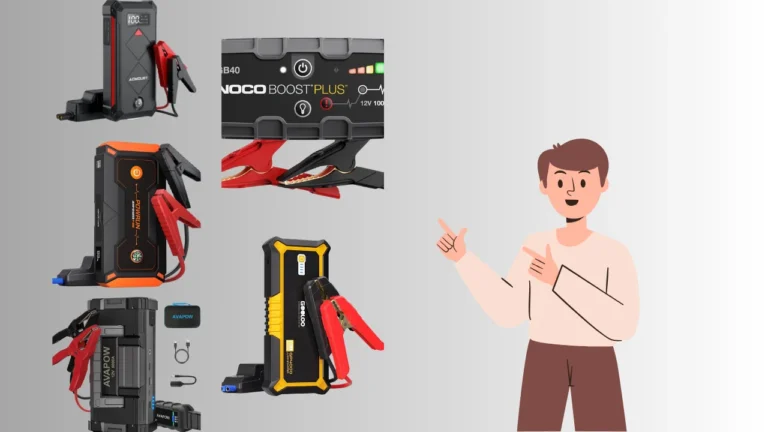If your refrigerator stops cooling, but the lights and fans are still functioning, the issue could lie with the compressor. Jumpstarting the compressor is a potential short-term fix for getting your refrigerator running again, especially if the problem is electrical. So, how to jumpstart a refrigerator compressor?
This guide will walk you through the process of jumpstarting a refrigerator compressor safely and effectively, including step-by-step instructions, tool recommendations, voltage considerations, and troubleshooting tips. Learn how to safely jump-start a box truck with this guide on jump-starting a box truck, covering essential tools and step-by-step instructions.
What Is a Refrigerator Compressor and Why It’s Important?
The refrigerator compressor is the core component that circulates refrigerant through the cooling system. It compresses refrigerant gas and pumps it through the condenser coils located outside the refrigerator. This process cools down the refrigerator by removing heat from the inside and expelling it outside.

If the compressor fails, the fridge won’t be able to cool properly, potentially leading to food spoilage. Compressors often malfunction due to electrical issues, overheating, or wear and tear—especially if the refrigerator is over 10 years old.
Here’s a quick-fix table on how to jumpstart a refrigerator compressor:
Signs Your Compressor Needs a Jumpstart
- The refrigerator is not cooling, but the lights and fans are functioning.
- Unusual noises, such as buzzing or humming, emanate from the compressor.
- Increased energy consumption or higher electricity bills.
- The compressor fails to start even when the refrigerator is powered on.
Safety Precautions Before Jumpstarting a Compressor
Before attempting to jumpstart your compressor, safety must be the top priority:

- Unplug the Refrigerator: This reduces the risk of electrical shock while working on the compressorz.
- Use Safety Gear: Wear insulated gloves and safety goggles to protect against electrical hazards and potential refrigerant leaks.
- Ensure Ventilation: If refrigerant leaks occur, it’s important to work in a well-ventilated area to avoid inhaling harmful gases.
- Use a Multimeter Safely: Before connecting any jumpstart devices, always use a multimeter to test for proper electrical resistance.
Tools and Equipment Needed
Jumpstarting a compressor isn’t complicated if you have the right tools. Here’s a breakdown of the tools you’ll need:
- Compressor Starter Kit: This kit, typically 115V to 220V depending on the fridge model, includes a relay, capacitor, and overload protector. It provides the necessary charge to start the compressor.
- Multimeter: Used to measure electrical resistance and voltage to ensure the compressor is receiving the correct current.
- Jumper Cables: Necessary for manually jumpstarting the compressor if a starter kit isn’t available.
- Screwdrivers and Pliers: For accessing and manipulating the compressor’s electrical components.
- Safety Gloves and Goggles: Essential for personal protection while working with electrical components.
How to Jumpstart a Refrigerator Compressor | Step-by-Step Guide
Jumpstarting a refrigerator compressor can temporarily restore cooling. Follow this step-by-step guide to safely troubleshoot and restart it. Here’s how to jumpstart a refrigerator compressor:

1. Unplug the Refrigerator and Clean the Coils
Before performing any repairs, unplug the refrigerator from the power supply to avoid electric shocks. Take this opportunity to clean the condenser coils located at the back or bottom of the fridge. Dust and debris can impair cooling efficiency, so a thorough cleaning is recommended.

2. Locate the Compressor
The compressor is usually found at the back or bottom of the refrigerator and looks like a cylindrical metal object encased in housing with wires attached to it. It is often black or silver. Discover the steps for jump-starting a Mini Cooper efficiently and avoid damaging your car’s sensitive electronics.

3. Test the Compressor with a Multimeter
Use a multimeter to test the resistance across the compressor terminals. This will help determine whether the compressor is defective or if a simple jumpstart will work:

- Set the multimeter to Ohms (Ω).
- Attach the probes to the “Start,” “Run,” and “Common” terminals of the compressor.
- A reading of 3 to 30 Ohms typically indicates that the compressor is functional. A reading of zero or infinity suggests the compressor might be faulty and may require replacement.
4. Install the Compressor Starter Kit
If the multimeter readings indicate that the compressor can still be salvaged, proceed to install a compressor starter kit:

- Disconnect the old relay and overload protector from the compressor.
- Connect the new relay and overload protector from the starter kit to the corresponding terminals on the compressor.
- Securely attach the wires and ensure everything is fitted correctly.
5. Manually Jumpstart the Compressor Using Jumper Cables
If you do not have access to a starter kit, you can manually jumpstart the compressor:

- Connect one end of the jumper cable to the positive terminal of the compressor and the other to a live electrical source, such as a battery charger or power outlet.
- Connect the ground wire to a metal part of the refrigerator chassis.
- Reconnect the fridge to the power source. The compressor should make a humming sound, indicating that it has started running.
6. Monitor the Refrigerator’s Cooling Performance
After the jumpstart, monitor the refrigerator’s cooling performance. Use a thermometer to ensure the internal temperature drops to the desired range (typically 37°F (3°C) for the fridge and 0°F (-18°C) for the freezer). This process may take a few hours. Understand the process and precautions when jump-starting a 24V system with a 12V battery to prevent system overloads.

Voltage and Electrical Considerations
Most refrigerators operate on 115V to 127V at 60Hz in North America. Using a multimeter to measure the voltage across the compressor terminals will help ensure that it’s receiving the correct amount of power. If the voltage is lower or higher than the specified range, it could damage the compressor or other electrical components.
- Normal resistance across the compressor’s start and run windings should be between 3 to 30 Ohms, depending on the model.
- A capacitance rating between 10 to 20 µF (microfarads) is typical for the capacitors found in most compressors.
4 Common Problems and Troubleshooting After Jumpstarting
After jumpstarting the refrigerator compressor, you may still encounter issues. Here are the most common problems and their potential solutions:

1. The Compressor Fails to Start:
If the compressor doesn’t start even after jumpstarting, you may have a faulty start relay or capacitor. A relay failure can prevent the electrical current from reaching the compressor, while a bad capacitor won’t provide the surge of energy needed to start the motor.
Solution: Replace the start relay and capacitor. You can test both components with a multimeter by measuring their resistance. The start relay should have low resistance, and the capacitor should fall within its rated capacitance (usually between 10 to 20 µF).
2. The Refrigerator is Still Not Cooling:
If the compressor runs but the refrigerator doesn’t cool effectively, other components of the cooling system may be malfunctioning. The condenser fan, evaporator fan, or thermostat could be broken, leading to improper cooling.
Solution: Check if the condenser fan and evaporator fan are spinning when the compressor runs. Also, test the thermostat to ensure it’s functioning. If these components are faulty, they may need to be replaced. Explore the best portable marine battery jump starters for reliable performance when you’re out on the water.
3. Overheating Compressor:
If the compressor overheats or runs continuously, it could indicate an issue with the refrigerant level. Low refrigerant levels can cause the compressor to work harder, leading to overheating.
Solution: Check for refrigerant leaks. Signs of a refrigerant leak include oily residue around the compressor or hissing sounds. If a leak is detected, contact a professional to refill the refrigerant and repair the leak.
4. Unusual Noises from the Compressor:
Buzzing, humming, or clicking sounds from the compressor can indicate worn internal components, electrical issues, or even a blocked refrigerant line.
Solution: If the compressor makes unusual noises, inspect it for loose or damaged parts. Tighten or replace these parts as necessary. However, some noises may require professional diagnosis and repair.
When to Call a Professional Technician?
Jumpstarting a refrigerator compressor is often a temporary fix, especially if the compressor shows signs of significant wear or electrical damage. If the compressor continues to malfunction or the refrigerator still doesn’t cool properly after attempting to jumpstart, it’s time to call a technician.
A professional can check more complex problems such as refrigerant leaks, broken internal components, or an electrical short. Attempting to fix these issues without proper tools and knowledge can lead to further damage or pose safety risks.
Signs you need professional help:
- Compressor still won’t start after replacing the start relay and capacitor.
- Refrigerator temperature doesn’t drop despite the compressor running.
- There’s evidence of refrigerant leaks or electrical shorts.
How Long Can You Expect a Jumpstarted Compressor to Last?
A jumpstarted compressor can keep your refrigerator running temporarily, but this is not a permanent solution. Compressors are mechanical devices that undergo wear and tear over time. If your fridge is more than 10 years old, the compressor might be nearing the end of its life, even after a successful jumpstart.
Average lifespan of a refrigerator compressor:
- 10 to 15 years for most modern refrigerators.
- After jumpstarting, the compressor might function for several days to weeks, but ultimately it will need to be replaced if it continues to fail.
Preventive Maintenance for Refrigerator Compressors
Preventive maintenance can help prolong the life of your refrigerator compressor and prevent the need for frequent jumpstarts. Here’s how to take care of your refrigerator compressor:
- Clean the Condenser Coils Regularly: Dust and debris buildup on the condenser coils can make the compressor work harder, leading to overheating and eventual failure. Clean these coils at least twice a year with a vacuum or soft brush.
- Check the Refrigerant Levels: Low refrigerant levels strain the compressor and cause it to overheat. Keep an eye on the performance of your fridge. If cooling decreases, have a professional check the refrigerant levels.
- Monitor the Temperature Settings: Keep your refrigerator and freezer at the optimal temperature settings: 37°F (3°C) for the fridge and 0°F (-18°C) for the freezer. Incorrect settings can cause the compressor to overwork.
- Avoid Overloading the Refrigerator: Overloading the refrigerator with too much food can block airflow and reduce cooling efficiency. This forces the compressor to run longer, increasing wear.
- Inspect the Electrical Components Regularly: Electrical surges or loose wiring can cause the compressor to fail. Periodically check the wiring connections for any signs of wear or damage. Find out which portable car jump starter with air compressor is perfect for emergency roadside assistance.
Final Words:
By following these steps, you can safely attempt to jumpstart your refrigerator compressor and, hopefully, extend the life of your appliance. However, always be cautious and recognize when it’s time to leave the repair to a professional. With proper care and maintenance, your refrigerator can continue to keep your food fresh and cold for years to come. Hope so, now you know how to jumpstart a refrigerator compressor. This comprehensive guide on using a jump starter to charge a dead battery explains whether it’s possible and what to watch out for.
Key Takeaways
- Jumpstarting a refrigerator compressor can be a quick fix to get your fridge running again, but it is a temporary solution.
- Ensure you have the correct tools—a starter kit, multimeter, jumper cables, and safety gear—before attempting the repair.
- If the compressor fails to start or the refrigerator doesn’t cool, troubleshoot other components like the relay, capacitor, or fans.
- Be mindful of voltage ratings (typically 115V to 127V at 60Hz) to avoid damaging the compressor or electrical system.
- Call a professional if the jumpstart doesn’t resolve the issue or if you encounter refrigerant leaks, electrical shorts, or persistent cooling problems.
Ali is a tech enthusiast and automotive aficionado, passionate about sharing insights on the latest innovations and industry trends.





